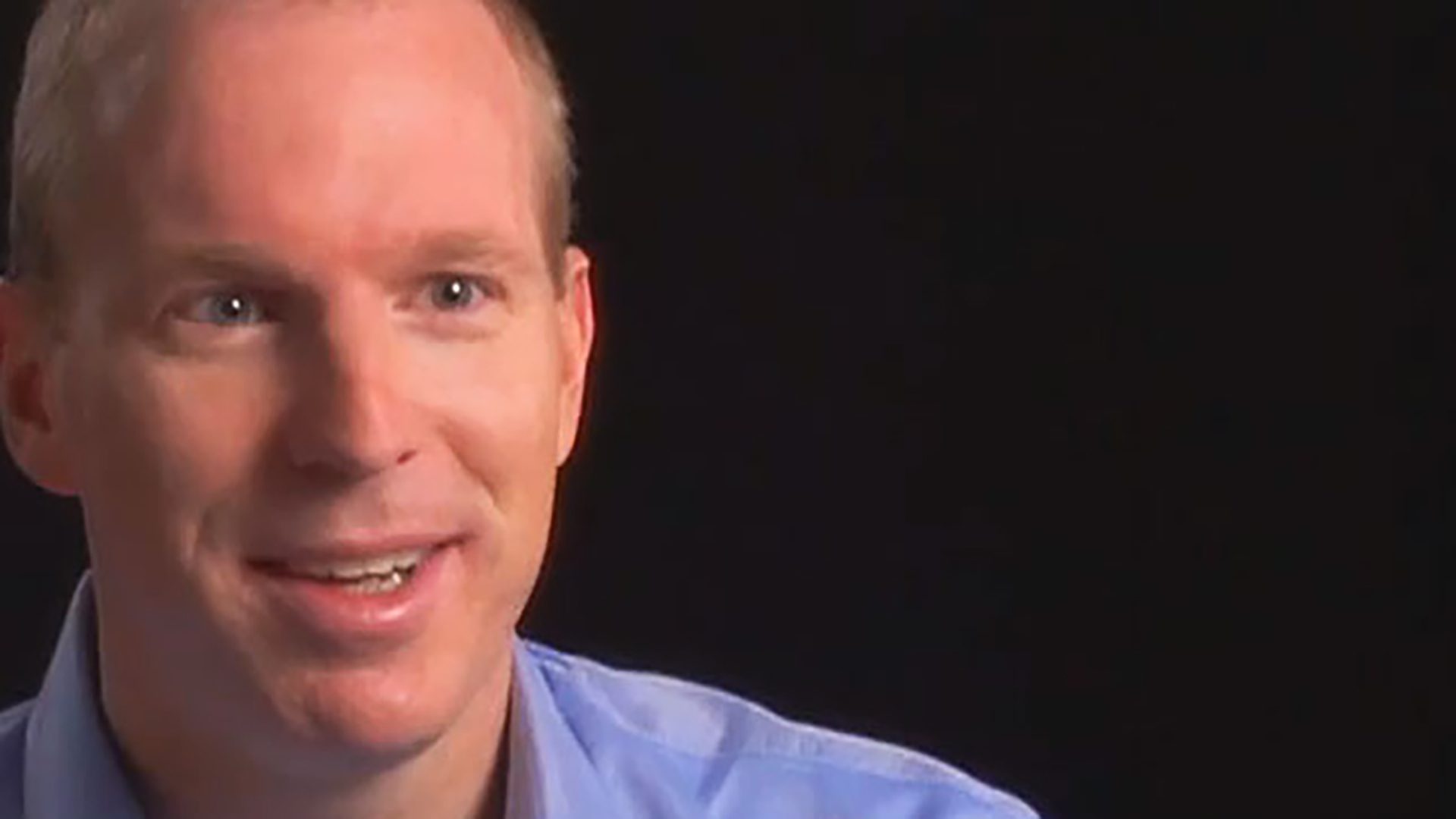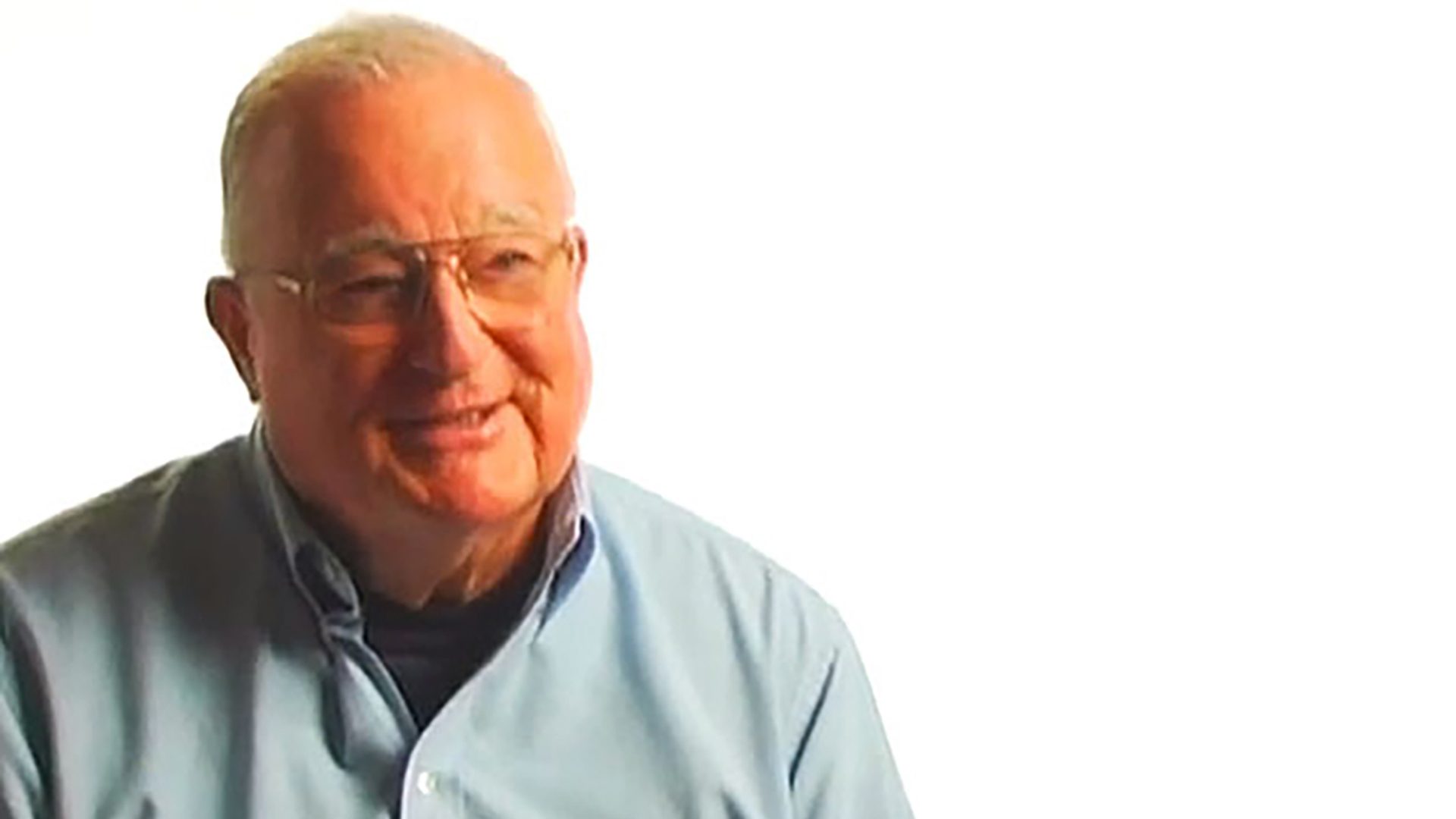Survivor Interview – Jim O.
Jim discusses biological therapies for brain tumors, talking to his son about cancer, and public policy for cancer survivors.

I was in fabulous shape, training for a marathon, and then I had a seizure at the end of a workout. No warning. All of a sudden, I’m in the hospital facing a brain tumor.
Initially, I had surgery, which was unsuccessful at removing it. I had radiation months later that shrunk the tumor by 30% percent and left me healthy enough to get married at the end of the summer. Within a few weeks, I started having seizures again. I was getting numbness and tingling in my fingers and toes. Thankfully, about that time, another doctor suggested, “Your problem is not your brain tumor right now. You’ve developed epilepsy because of the radiation.” I switched my medications after the holidays and within a few weeks, I was on the path to recovery. A month after that, I actually started racing again. And I was back at work.
In 2002, my brain tumor returned. This time, I had time to look at all my options. The standard treatment had potential for significant side effects again, mainly neurological issues. I’d been there, and I didn’t want to go back. A new therapy had just been approved. It was an oral chemotherapy, and I elected to do that. Right now, I am taking an oral medication. It’s not even a chemotherapy; it’s a biologic agent. I take the pill in the morning, and I forget about it. It’s nearly side effect-free, and after six months, my brain tumor is again stable. It made all the difference in the world.
My initial treatment has left me with epilepsy, and I’m now on an epilepsy medication. Back in 1998 to 1999, I’d be walking across the street and my leg would collapse on me. I had to lie down at different times. These were pretty significant issues that could crop up again. Mostly for the past three years, I’ve not had to deal with it. When I had the recurrence in 2002 to 2003, I started having seizures again mostly linked to leg tingling and trouble typing with my left hand. Thankfully, I’m on a regimen that’s working well for me. It’s a new epilepsy medication that doesn’t have the side effects of the ones that I was on for five years; namely, significant memory loss and a lot of sedation.
So not only have cancer treatments come a long way in the past seven years since I was diagnosed, the medications that are treating my side effects have come just as far, or further. Right now, I have some trouble sleeping. Frankly if that’s it, it’s a long ways improved from where I was. There are options, and you need to become as knowledgeable as you can about your disease. Ask the questions. What are my choices? What can I do? What are the side effects? We thought that we would have another child, and we’re concerned about fertility issues.
Our son, Max, is five years old. In the past year, he started to get it. His dad has cancer. And while we didn’t shield him at first, we didn’t really talk openly about it. Until one day at four years old, he looks at me and says, “Daddy, what’s a brain tumor?” And we’re not going to lie to him. We started talking about it. Thankfully, this last year was a fabulous year. I rode in the Bristol-Meyers Squibb Tour of Hope, and all Max can see is possibility. One day, he decided he was going to get off his training wheels. It was a tough few weeks, but he got off of them. And then he said, “Okay, now I’m ready. I can ride across the country with you.” Kids, all they know is possibility. He knows that I got sick. I got something called cancer, but the doctors are making me better. So here he is at five and a half years old and hopeful. We’ve had some people die around us, but he’s not dwelling on the dying. He wears his bear-sized Livestrong wristband, and he’ll say to people, “I’m living strong and beating cancer.”
The Bristol-Meyers Squibb Tour of Hope is an amazing weeklong journey across the country. We went from Los Angeles to Washington, D.C. It is a team relay, eight to eight-and-a-half days, with Lance Armstrong to spread the message about hope and about the increased need for clinical trial participation. There are 10 million people living with cancer. Only 3 to 5 percent of adults participate in clinical trials. Put that in context that about 60 percent of pediatric cancer patients participate in trials, and the progress that’s been made in pediatric cancer is so much greater than what’s happened in the adult community. We just need to spread that word out there. I think the biggest hurdle is information. Only about 15 percent of adults know that clinical trials are an option and oftentimes are the best option for them. I’ve taken two non-standard drugs. I’m in a clinical trial right now, and I’ve done a lot of research. This was absolutely the right choice for me.
My wife and I talk about it a lot. It’s been part of our whole marriage. We were just getting engaged when I was diagnosed. Within a few weeks of getting married, my worst side effects from radiation started. I was having trouble walking at times. I was sleeping half the day. I put on 35 pounds because of the steroids that were controlling the swelling that I had in my brain. We really didn’t know if we were going to have any time. And now we laugh a lot. We have good times, and we spend a lot of time with Max. I still pursue my athletics, and we’re pursuing our dreams. If we didn’t laugh, we’d cry sometimes. We have very open and honest conversations with each other about what’s coming up.
I’m in Washington, D.C. for Livestrong Day. I’m here to talk to my leaders, members of the House and Senate, and let them know how important it is to help us further the fight against cancer. To help us create survivors around us. To help the millions of Americans that are living with cancer live a full life like me, and get back to working, get back to working out, get back to your full life, and be there for your family. It’s much more than just the cure. It’s putting the disease behind us, managing all the side effects, and managing finances. It’s daunting at times, but it can be done. I’m doing it, and there are many people doing it. I want them to know that we need our leaders to help us have the tools to be able to get through this and to create a better tomorrow.
We thought we would have decades to prepare for Max’s college and to prepare for our retirement. There are a lot of out-of-pocket expenses. There are travel expenses, and there’s time away from work. It just goes on and on every time we turn around. Thankfully, we’ve been able to manage financially. I have concern down the road. This is a lifelong disease for me. Right now, I’m at a cycle where it seems to be coming back every two to three years. Thankfully, every two to three years, there’s a great new treatment available for me. But as we do that, I’m still facing the issues of life that everybody faces. My earning potential is a big question mark down the road. My ability to continue working full-time and be there for my family is also a question.
People have to hear stories like mine. They have to hear that you might get cancer. But you can get through it. I did; you can too. I started a Web site to try and tell people that. I bike across the country to tell people that. Every place I go, there’s somebody else starting down the road, and there were people like that for me, helping me, telling me that there’s a great life ahead, and you can get through this. Now I want to tell everybody I can, tell our leaders that there can be a better world for people as you get through this. But it’s a long road, and it takes a community. It takes everybody getting involved. There are going to be the employment issues, insurance issues, long-term care issues, and fears of recurrence. And it doesn’t just get dealt with by the oncologists. There are so many people that need to get involved, and I want to make sure that people understand that we have a long way to go to really beat this disease.
I’m delighted to be here. I’ll tell my story to anybody. Lance was a shining example for me that you can get through this. I remember Lance’s quote, “I have taken nothing for granted now. I only have good days and great days.” There are so many people that came out of everywhere to support me when I got started to say, “I’ve been there. I’m beyond it. You can get there.” I want to be that person for someone just starting out now.
Livestrong means keep your dreams. Go for it. It means cancer limits you only if you let it. You can have a great life after cancer.
My name is Jim Owens, and I’m a seven-year brain tumor survivor.

